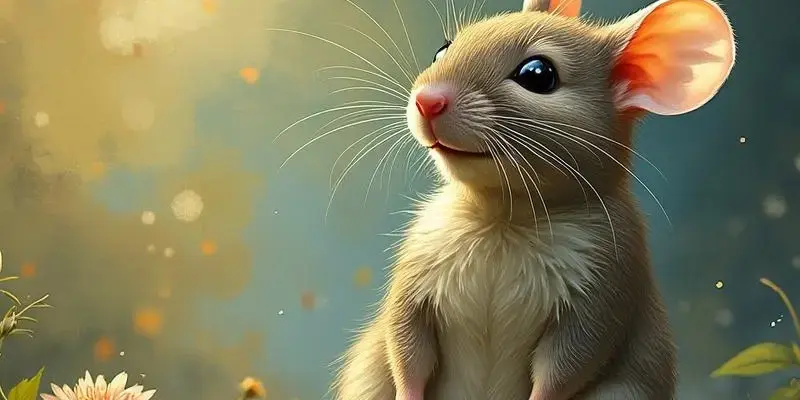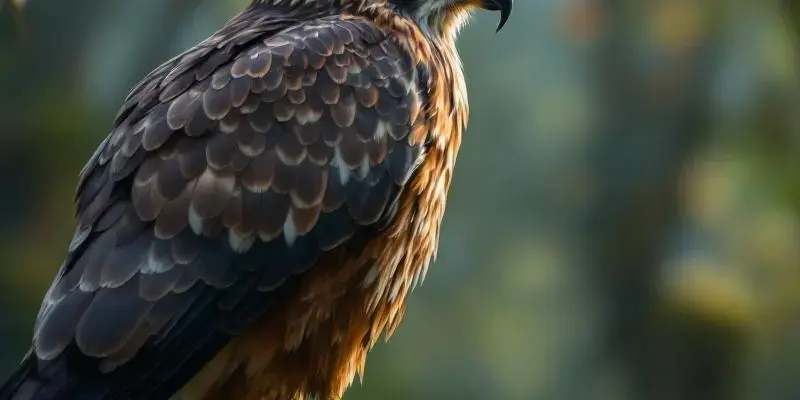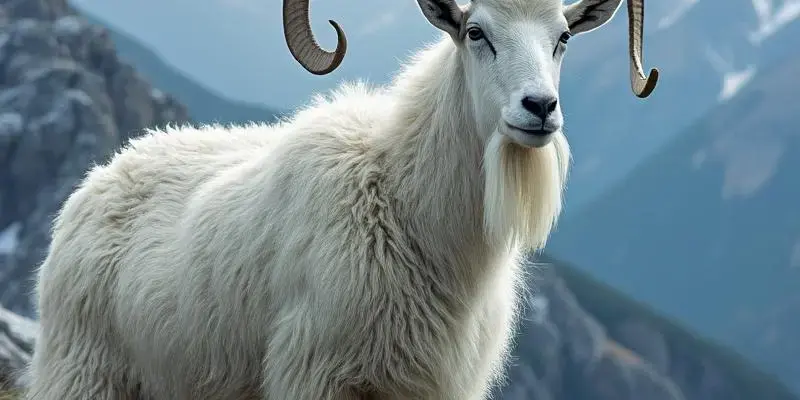Mouse spiritual meaning

The mouse, though physically tiny, carries immense spiritual significance across numerous cultures and traditions, serving as a powerful symbol of humility, resourcefulness, and attention to detail. This small creature teaches us the profound spiritual lesson of “releasing overwhelm” while demonstrating how the smallest beings often carry the most impactful wisdom for navigating our complex world.
Key Takeaways
- Mice symbolize humility and resourcefulness across diverse cultural traditions
- Ancient civilizations created bronze mouse sculptures, showing their historical spiritual significance
- As spirit animals, mice teach us to notice life’s small miracles and practice mindfulness
- The mouse holds the prestigious first position in the Chinese zodiac cycle
- Mouse dreams typically reveal messages about overlooked details in our waking lives
The Tiny Powerhouse of Spiritual Wisdom
The spiritual significance of mice presents a fascinating paradox – the smallest creatures often carry the most profound spiritual weight. Throughout history, these tiny beings have been revered for their ability to teach us essential life lessons through their natural behaviors and symbolic presence.
Archaeological findings have uncovered 2-3 cm bronze mice sculptures distributed widely across the Roman Empire, demonstrating the historical importance of mice in ancient spiritual practices. These artifacts often depicted mice holding nuts, fruits, or theater masks – symbols that held deep meaning within Roman culture.
At its core, mouse symbolism centers on humility, resourcefulness, and meticulous attention to detail. The mouse spirit animal specifically teaches “the discipline of releasing overwhelm” – a vital spiritual lesson for our busy modern lives. Described as “a powerhouse tucked into a tiny package,” the mouse carries spiritual significance that far exceeds its physical size.
Even the god Apollo showed remarkable reverence for mice, earning the title “Lord of the Mice” and allowing these small creatures to nest under his altar. This divine connection highlights the mouse’s role as both a sacred being and a spiritual messenger across numerous traditions.
Cross-Cultural Mouse Symbolism: From Revered Helper to Trickster
Mouse symbolism varies remarkably across different cultures, ranging from helpful allies to clever tricksters. In Native American traditions, mice hold particularly positive associations. The Blackfoot tribe regarded mice as “brothers and helpers of people,” while Hopi culture celebrated the “Warrior Mouse” as a hero figure. Some tribes even adopted mice as clan animals, though the Tlingit tribe took a different perspective, associating mice with witchcraft.
European traditions present a mixed view of mouse symbolism. The Greeks connected mice to Apollo as a divine healer, while Romans created those distinctive bronze mice sculptures holding various symbolic items. Celtic traditions took a more negative view, seeing mice as creatures that brought misfortune.
In African folklore, the mouse often appears as a symbol of false pride and arrogance, featured in tales where a mouse attempts to prove its superiority to an elephant – a clear moral lesson about recognizing one’s true place in the world. This contrasts with Chinese symbolism, where mice represent “cunning charm and prosperity” and hold association with the water element, highlighting their adaptability.
The Chinese zodiac grants mice the prestigious first position in the 12-year cycle, further emphasizing their cultural importance despite their practical status as pests in many societies. This paradoxical reverence appears in prairie dog spiritual traditions as well, where small burrowing creatures hold outsized symbolic meaning.
Mythological Mouse Tales: Small But Mighty
Mice feature prominently in myths and fables across civilizations, consistently demonstrating that small size doesn’t limit spiritual significance. Aesop’s Fables include two of the most famous mouse tales: “The Lion and The Mouse,” which teaches that kindness returns a hundred-fold, and “Country Mouse and Town Mouse,” which contrasts contentment with ambition.
Greek mythology strengthens the mouse’s divine connections through Apollo’s title as “Lord of the Mice.” Ancient Greek coins even featured mouse profiles, highlighting their cultural importance. Interestingly, mice held a dual symbolic role as both healers and disease-bringers – a complex spiritual duality that reflected their physical presence in human communities.
Celtic mythology associates mice with magic and transformation. In the Mabinogi stories, a mouse appears as the “shapeshifting wife of a magician,” emphasizing their mysterious nature. This magical association connects to similar symbolism found in rabbit spiritual meaning, where transformation themes also predominate.
Roman artifacts reveal the significance of mice holding “the theatre mask of Papposilen” – a figure described as the “head of the satyrs and mentor of Dionysus.” This connection links mice to wisdom and revelry simultaneously, showing the complexity of their symbolic meaning.
Native American legends often cast mice in the role of “Fire-Stealer,” succeeding in crucial tasks where physically larger animals failed. This theme of the small overcoming challenges through cleverness rather than strength repeats across cultures, teaching that physical size doesn’t determine spiritual power.
The Mouse as Spirit Guide: Subtle Wisdom for Modern Life
As a spirit guide, the mouse offers profound teachings centered on “attention to detail, humility, and resourcefulness.” Mouse medicine teaches us to tread lightly in the world and find strength in smallness rather than dominance. This spirit animal reminds us that power often comes in unexpected packages.
The mouse spirit guide excels at teaching resource management wisdom, demonstrating “careful use of resources, whether finances, personal energy, or emotional output.” I’ve observed that mouse energy promotes environmental conservation techniques and preparation for challenging times – lessons increasingly relevant in our resource-conscious world.
Mouse spirituality reveals surprisingly monk-like qualities, prompting the observation that “Mouse knows this. This is what makes mouse a monk.” The mouse finds divinity in small moments and practices the discipline of releasing what’s overwhelming. This spirit guide helps us see “tiny, quiet miracles every single moment” that we might otherwise miss in our rush through daily life.
The mouse spirit guide shares similarities with mole spiritual symbolism in teaching us to look beneath surface appearances to find deeper truths. Both animals remind us that spiritual insights often hide in plain sight, waiting for us to slow down enough to notice them.
Chinese Zodiac: The Year of the Mouse
In Chinese astrology, the mouse (sometimes translated as rat) holds the first position in the 12-year zodiac cycle – a position of honor that speaks to its cultural significance. People born in Mouse years are believed to inherit personality traits including being “resourceful, alert, and adaptable” – qualities that reflect the mouse’s natural behavior.
The mouse’s association with the water element in Chinese tradition highlights its ability to navigate life’s challenges with flexibility and intelligence. Recent Mouse years include 2020, 2008, and 1996, each carrying the distinctive energy of this clever, resourceful creature.
Despite mice being considered pests in practical terms, their cultural veneration in Chinese tradition demonstrates the separation between physical reality and spiritual symbolism. The mouse represents “cunning charm and prosperity” as central themes, making it a positive spiritual symbol despite its sometimes troublesome physical presence.
The mouse’s first position in the zodiac comes from a legendary race where the small creature rode on the ox’s back before jumping ahead at the finish line – a story that emphasizes cleverness over physical strength. This tale teaches that spiritual success often comes through adaptability and intelligence rather than brute force.
Mouse Dream Symbolism: Messages from the Subconscious
Dreams featuring mice typically carry messages about “fear, timidness, insignificance, or lack of assertiveness” in waking life. These dreams often point toward overlooked details that deserve your attention – reflecting the mouse’s natural ability to notice what others miss.
Different dream scenarios involving mice carry specific interpretations. A dead mouse in dreams suggests “not letting minor issues bother you,” while a white mouse indicates you’re “about to receive spiritual guidance in the form of a new direction.” Dreams about killing or trapping mice might reveal that others are magnifying minor issues in your life, while dreaming of eating mice could point to something nagging at your conscience.
The connection between dream symbols and the mouse’s natural characteristics offers insight into these interpretations. Mice naturally pay attention to small details and move quickly – qualities that translate into dream messages about noticing overlooked elements in your waking life.
Color holds particular significance in mouse dreams, with white mice generally considered positive omens. White represents purity and spiritual guidance across many traditions, so a white mouse in dreams often signals incoming spiritual messages or a new path opening before you.
Living with Mouse Medicine: Practical Applications
The spiritual wisdom of mice translates directly into practical environmental sustainability practices. “Mice are outstanding role models for environmental-friendly living” as they “hoard and conserve in ingenious ways.” The mouse’s presence in your life might suggest it’s time to monitor your consumption patterns and consider how you might use resources more efficiently.
Mouse medicine encourages mindfulness techniques centered on finding the sacred in small moments. Through quiet observation practice and the “monk” approach to daily life, mouse energy helps us recognize the divine presence in seemingly ordinary experiences. This contrasts sharply with consumerism’s “bigger is better” mentality.
One of mouse medicine’s most valuable teachings is overwhelm management through “the discipline of releasing what’s too much.” Finding strength in humility and appreciating that “answered prayers are between blades of grass” helps us maintain spiritual balance in a world that often feels chaotic and demanding.
I recommend a 7-day practice for working with mouse medicine: each day, dedicate time to noticing “tiny, quiet miracles” in your everyday environment. This simple exercise aligns you with mouse energy and helps develop the spiritual awareness this small but mighty creature teaches us to cultivate.
This article explores the spiritual significance of mice across cultures, portraying them as symbols of humility, resourcefulness, and attention to detail. Despite their small size, mice hold profound spiritual meaning in many traditions, with archaeological evidence showing their reverence in ancient civilizations. The mouse serves as a powerful spirit guide teaching us to notice life’s small details, manage resources wisely, and release overwhelm. It holds an honored position in the Chinese zodiac and appears in numerous mythological tales emphasizing how strength comes in small packages. Mouse dreams typically reveal messages about overlooked details in our waking lives.
| Key Aspect | Meaning |
|---|---|
| Core Symbolism | Humility, resourcefulness, attention to detail |
| Historical Significance | Bronze mouse sculptures found throughout Roman Empire; connection to Apollo |
| Spirit Animal Lesson | “Releasing overwhelm” and noticing life’s small miracles |
| Cultural Variations | Revered helper in Native American traditions; divine healer in Greek culture; first position in Chinese zodiac |
| Dream Interpretation | Highlights overlooked details; different meanings based on context and color |














